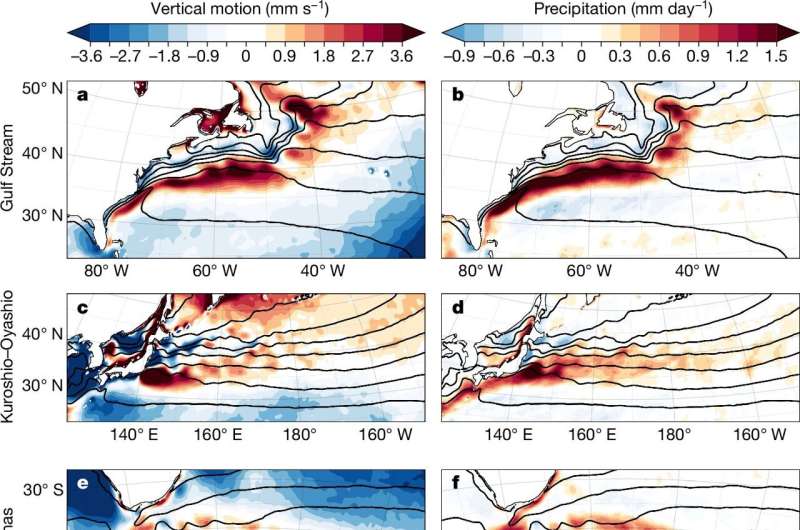Research Indicates Western Boundary Currents Play a Larger Role in Local Climate Variability Than Previously Understood

November 1, 2024 report
This article has been reviewed according to Science X's editorial process and policies. Editors have highlighted the following attributes while ensuring the content's credibility:
fact-checked
peer-reviewed publication
trusted source
proofread
by Bob Yirka , Phys.org
A trio of atmospheric scientists at Colorado State University has found evidence suggesting that western boundary currents have a bigger impact on local climate variability than has been previously thought.
In their paper published in the journal Nature, James Larson, David Thompson and James Hurrell describe how they used satellite data and numerical modeling to better understand the impact of western boundary currents on local climate variability and what they learned by doing so. The editors at Nature have published a Research Briefing outlining the work done by the researchers in the same journal issue.
Boundary currents are, as their names suggests, ocean currents that are impacted by coastlines associated with landmasses. They fall under two main categories, eastern and western. Eastern boundary currents are those that have an eastern boundary, which means they run against the western coast of a landmass. Western boundary currents are the opposite.
In this new study, the research trio noted that prior research focusing on the impact of boundary currents has typically focused on mean climate impacts—western boundary currents, for example, are known to move huge amounts of warm water from the tropics to the mid-latitudes. Because of that, they have a major impact on wind, precipitation, and storms, in general.
For this study, the researchers wanted to learn more about the role western boundary currents play in local weather variability. They analyzed high-resolution satellite images and used numerical models to find associations between factors such as sea surface temperatures (SSTs) and vertical motion in the atmosphere over western boundary currents in both hemispheres. More specifically, they looked for associations between SSTs and circulation of air in the troposphere on a month-by-month basis at a localized level.
The researchers found what they describe as variability in SSTs and their influence on local atmospheric circulation, which has an impact on precipitation amounts and the vertical rise and fall of air in the troposphere. The team sums up their findings by suggesting their work has shown that there is a mechanism that connects ocean processes to local climate variability. They suggest this finding could have an impact on weather forecasting models.
More information: James G. Larson et al, Signature of the western boundary currents in local climate variability, Nature (2024). DOI: 10.1038/s41586-024-08019-2
Oceanic western boundary currents modulate local climate variability, Nature (2024). DOI: 10.1038/d41586-024-03386-2
Journal information: Nature
© 2024 Science X Network




